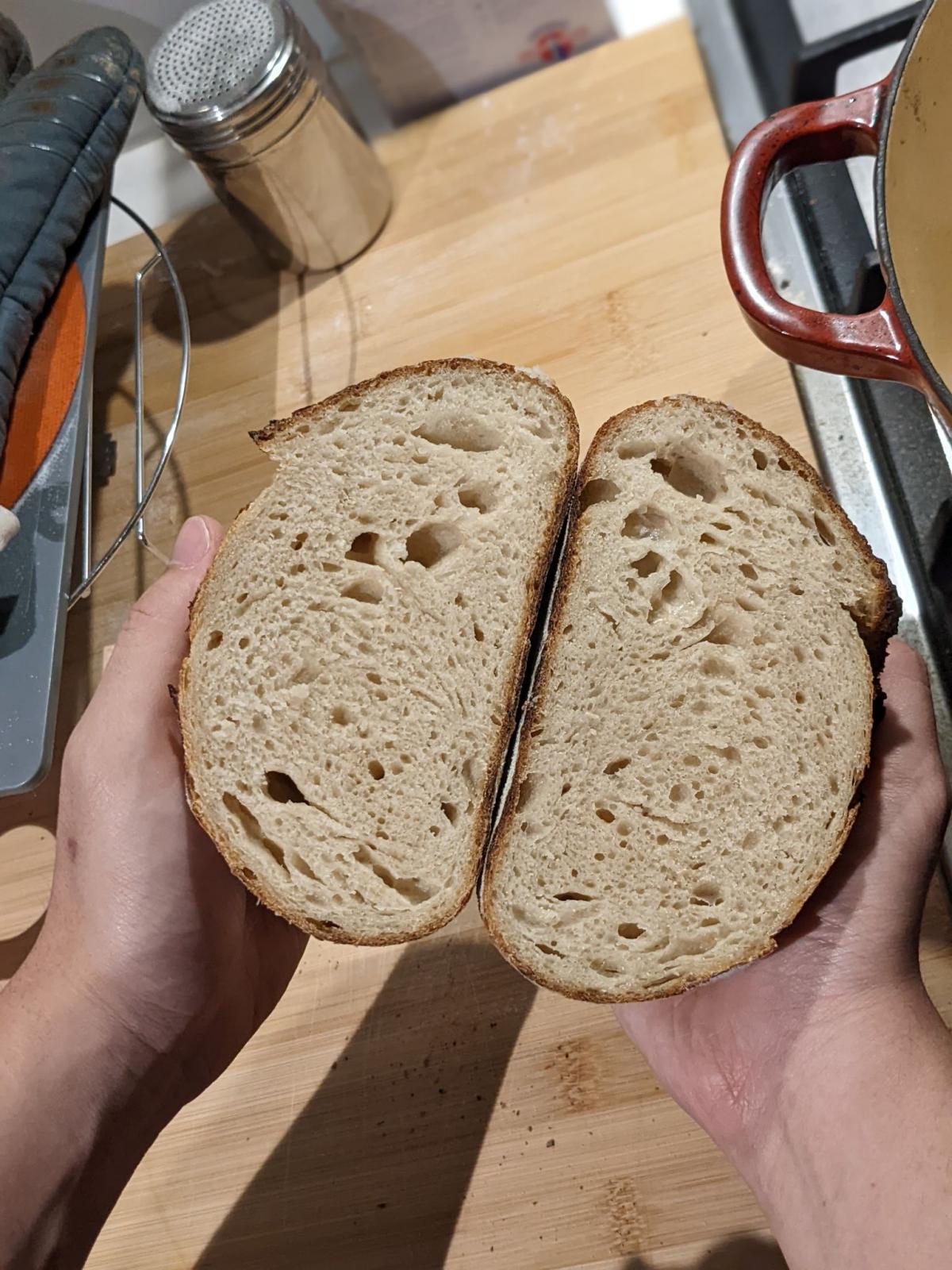September 10, 2022 - 7:49pm

Gummy Crumb Help

Hi my loaf came out really dense and gummy, even with pieces sticking to the knife (not that bad but notable).
Ingredients (2 loaves):
- 593g Bread flour
- 148g Wholewheat flour
- 496g Water
- 148g 1:1 Starter at Peak (fed 1:2: 2 before hand)
- 15g Salt
Steps:
- Mix everything and leave for a hour.
- 2x Stretch and folds + 1 Coil fold spaced by 30 minutes
- Bulk fermented until risen double (I've tried 25% & 50% in the past too and they've all had a dense gummy texture compared to a loaf that I spiked with 0.5g instant yeast which is what I imagine the loaf should be like). Took about 5-6 hours on my counter.
- Pre shape and sit for 20 minutes.
- Final shape, into banniton and stitched.
- The loaf in the photo was in the fridge for 2 hours. I'm making a loaf that retarded overnight now.
- Baked in dutch oven @ 250 C (20 minutes lid on, 20 minutes lid off). Cut open after it cooled down.
I don't think theres anything wrong with my method and I have a thermometer in my oven so the only explanation I can think of is something going wrong during BF. Really struggling to determine if I'm over or under fermenting. I thought testing 25, 50 and 100% rise would give me a better idea but this has honestly left me more stumped.


My experience is that breads baked in Dutch ovens (DO) turn out gummy because the DO prevents some of the moisture from "baking out." Try this: Remove the loaf from the DO after baking as above and return it to the oven for another five minutes or so. I will be interested in other opinions about this matter.
How does it cut today, a day after baking?
Not surprising for 83% hydration.
How soon after baking was the loaf cut?
Even day after, texture is gummy and dense enough to not be pleasant.
I cut the loaf maybe 3 hours out? Was room temp all the way through.
working In your dough. Retarding overnight gives the yeast a good chance to increase and increase those fine gas bubbles in the crumb. Let’s see how it comes out. i would be tempted to let out steam (uncover) during the bake as already mentioned or reduce the amount of water in the loaf. Stick with changing only one thing at a time with each bake.
I had a wierd feeling about the one I left in the fridge overnight so I took it out this morning and let is sit at room temperature for another 3-4ish hrs. Texture was a little gummy but way less than the one above!
These results are very confusing, would anyone be able to explain?
305169196_1812043802471102_6581036581771765856_n.jpg
305812587_1063516894305911_3452345698701367441_n.jpg
I think if you want similar results without the retard, you may have to increase the amount of starter (to get higher yeast numbers) and adjust the water lowering it just a tad. You might also want to develop gluten more after mixing and hydrating the flours.
Time develops gluten so the retarded loaf had more time to develop gluten during final proof.
Loaf looks great!
You might want to try letting the bulk rise go longer before shaping and retarding all else being equal. The 4-5 hors bevor baking will be considerably shorter and you might get a more risen cold rise. Temp of fridge?.
Is it normal to go over doubling in size during BF? Fridge temp is 2-3 C
Yeast activity will stop in its tracks when the shaped loaf cools down to fridge temp.
Yes, a sourdough bulk rise can double.
Step 6: I would leave the shaped loaf on the bench for 30 minutes before retarding to give the yeast a chance to act.
As mentioned above…. I’d also drop hydration by about 5%.
Makes sense, I might try to add in a few more stretch and folds too like Mini Oven suggested. Thanks!
I'd want to see the internal at ~200F/94C.
I used to have a problem with gummy loaves when my starter was young.